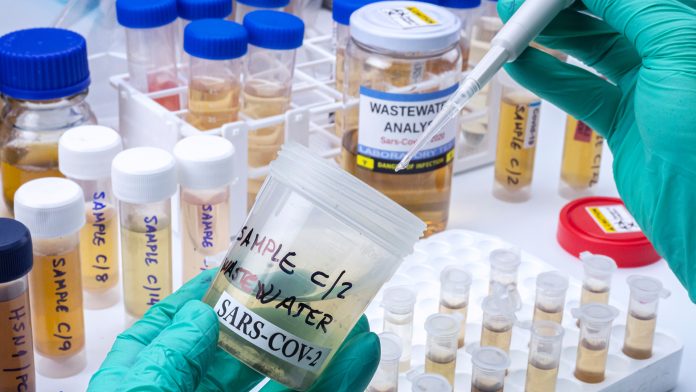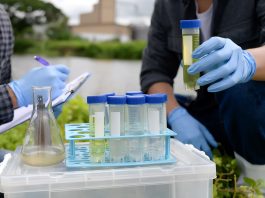To better understand COVID-19’s spread during the pandemic, public health officials expanded environmental water surveillance.
Environmental water surveillance tracks SARS-CoV-2 levels and health risks among most people, but it misses people who live without shelter, a population particularly vulnerable to severe infection.
To fill this information gap, researchers have tested flood-control waterways near unsheltered encampments, finding similar transmission patterns as in the broader community and identifying previously unseen viral mutations.
The research is published in Environmental Science & Technology Letters.
The limitations of testing untreated environmental water
In recent years, testing untreated environmental water for SARS-CoV-2 incidence and dominant viral variants, as well as other pathogens, has been vital to helping public health officials determine infectious disease transmission in local communities.
Despite this, this monitoring only captures information on viruses shed from human waste in buildings that are connected to local sewage infrastructure.
Beyond the pandemic’s impact on human health, it also exacerbated socioeconomic difficulties.
It increased the number of people experiencing homelessness and living in open-air encampments without access to indoor bathrooms.
To understand the prevalence of COVID-19 among people who live unsheltered, Edwin Oh and colleagues tested for SARS-CoV-2 in waterways near encampments outside Las Vegas from December 2021 until July 2022.
Identifying SARS-CoV-2 in unsheltered areas
Using quantitative polymerase chain reaction, the researchers identified SARS-CoV-2 RNA in more than 25% of the samples tested from two flood-control channels.
The highest detection frequency over the study period aligned with Las Vegas’ first wave of omicron variant infections, as confirmed through parallel testing at a local environmental water treatment plant.
The researchers say these results suggest a similar level of transmission was occurring within the unsheltered community as it was among the general population.
Then, the researchers conducted whole genome sequencing to identify the SARS-CoV-2 variants in the waterways. These samples largely contained the same variants identified in the broader community.
Deeper computational analysis of the viral sequences identified three novel viral spike protein mutations in some environmental water samples, but the researchers have not yet examined what impact these mutations might have on viral function or clinical outcomes.
Regardless, the ability to detect and identify SARS-CoV-2 in environmental water samples could help improve public health measures for a community that is often underrepresented in current surveillance methods.
The researchers also say monitoring environmental water could warn health officials of unexpected variants circulating in the community.









